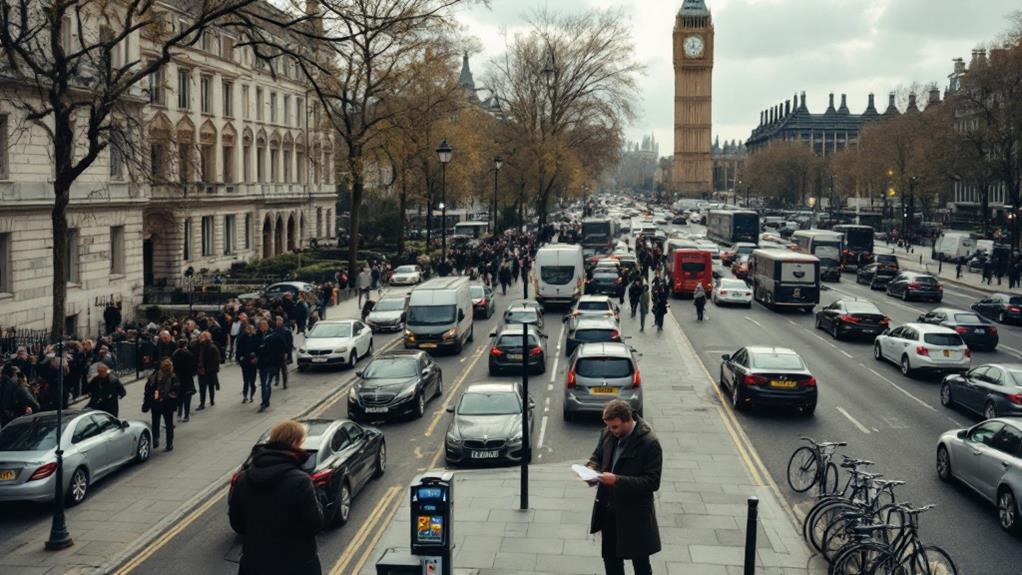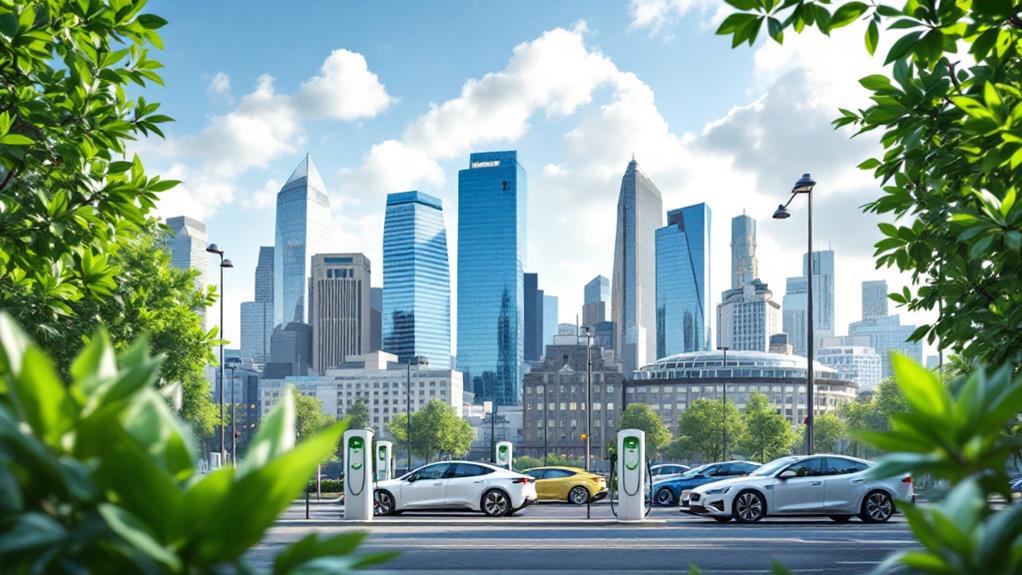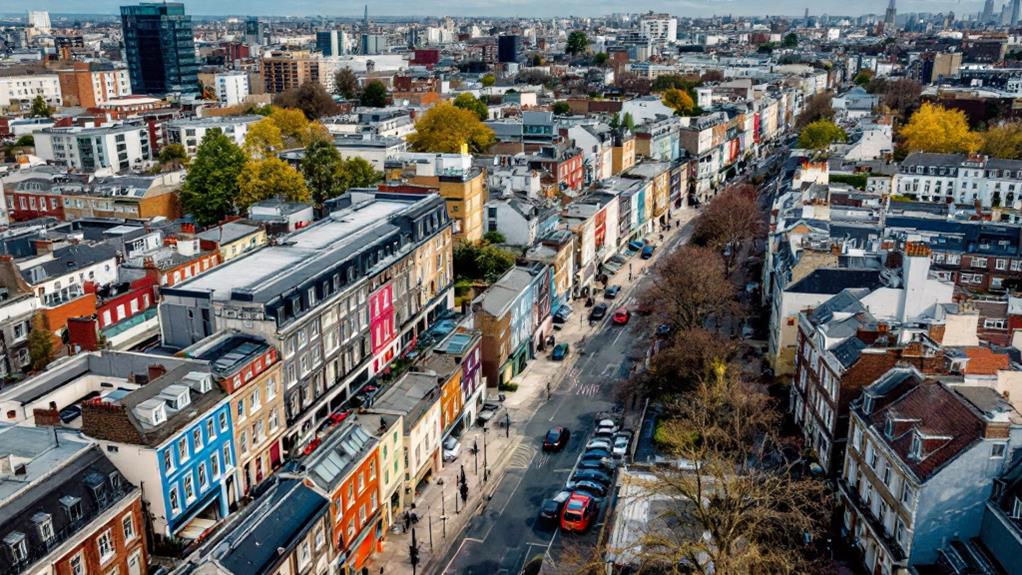Limited Space: The Struggle of Parking Larger Vehicles in London
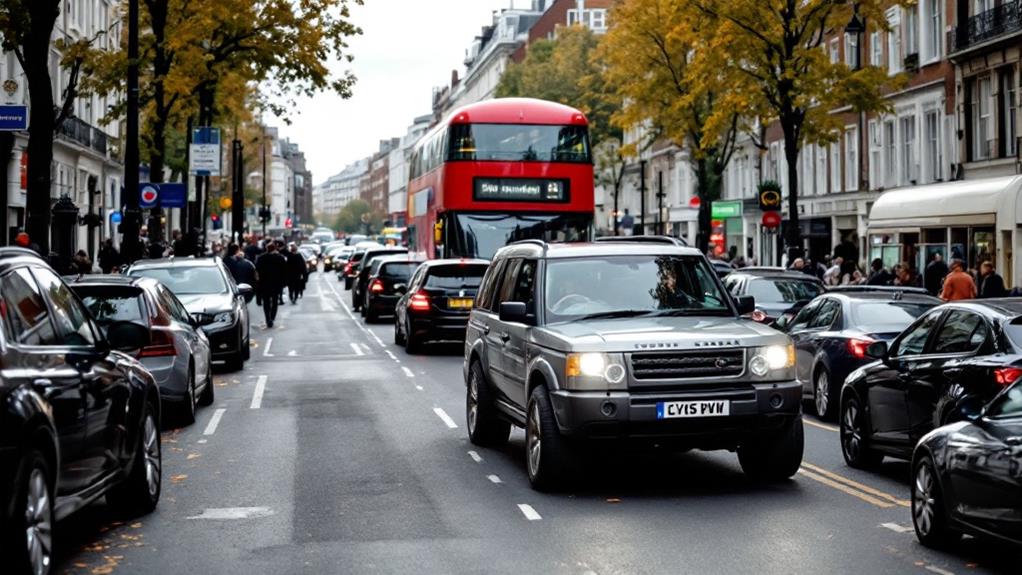
You'll face an uphill battle if you're trying to park your SUV or large vehicle in London's tight spaces. Parking standards haven't changed since 11976, but vehicles have grown enormously. Many modern cars now exceed standard bay lengths and widths, making it a challenge to fit comfortably. This issue is particularly acute in urban areas like London, where space is already at a premium. Cities are responding with increased parking charges for larger vehicles and considering new regulations. As the trend towards bigger cars continues, you'll need to be prepared for the ongoing struggle of finding suitable parking. The future of urban parking design holds some potential solutions.
The Rise of SUVs
The popularity of SUVs has skyrocketed in recent years, with these larger vehicles now dominating UK car sales. You'll find that SUVs account for over 40% of annual car purchases, more than doubling their market share from a decade ago. This SUV trend has dramatically altered the composition of vehicles on British roads.
As you traverse through city streets, you'll notice the increasing presence of these larger vehicles. The average SUV weighs around 2,000kg, with some models tipping the scales at a hefty 3,400kg. Compare this to a typical family hatchback at 1,200kg, and you'll understand the dramatic shift in car size.
While SUVs offer certain advantages, they also bring challenges. You'll face increased difficulty finding suitable parking spaces in urban areas like London. Additionally, the rise of larger vehicles has environmental implications. The trend has led to a 30% reduction in potential emissions savings, offsetting progress made in fuel efficiency. As a pedestrian, you should also be aware that SUVs pose a greater risk to safety, particularly for children, who are eight times more likely to suffer fatal injuries when struck by an SUV compared to a passenger car.
Outdated Parking Space Standards
Despite the growing size of vehicles, parking space standards in the UK have remained frozen in time. Since 1976, the dimensions of standard parking spaces haven't changed, even as cars have grown significantly larger. You'll find that this mismatch creates a frustrating situation for drivers of modern vehicles.
The problem is evident in the numbers. In 2019, 129 car models exceeded the standard bay length. By 2022, this number had jumped to 161. Even more concerning, 12 car models now stick out more than 30cm beyond the bay, with the BMW i7 protruding over 50cm. It's not just length that's an issue; 27 car models are too wide for you to comfortably navigate within a standard parking bay.
Adapting existing car parks to accommodate these larger vehicles is a challenging and costly undertaking, especially for multi-storey facilities. As you traverse London's streets in your SUV or luxury sedan, you're likely to encounter difficulties finding suitable parking spaces. The outdated standards for car parking are creating a squeeze that's only becoming more pronounced as vehicles continue to grow in size.
Safety Concerns in Urban Areas

As larger vehicles become more prevalent on London's streets, safety concerns in urban areas have escalated dramatically. You're likely aware that sport utility vehicles (SUVs) and other large utility vehicles pose a significant threat to pedestrians, especially children. When these massive vehicles, weighing up to 3,400kg, are involved in collisions, the consequences can be devastating.
Consider these alarming facts:
- Children are eight times more likely to die when struck by an SUV compared to a passenger car.
- SUVs weigh nearly twice as much as family hatchbacks, increasing the danger they pose.
- The trend towards larger vehicles has hindered progress in reducing motor emissions.
- Activist groups have taken extreme measures to protest the presence of SUVs in urban areas.
As you traverse London's streets, whether as a driver or pedestrian, it's essential to be aware of these risks. The recent tragic incident involving two young girls highlights the urgent need for improved safety measures. While car parking spaces remain a challenge for larger vehicles, the focus must shift to protecting vulnerable road users. You should consider the impact of your vehicle choice on both the environment and the safety of those around you.
Regulatory Responses to Larger Vehicles
With the influx of larger vehicles on London's streets, regulatory bodies are now contending with how to address the challenges they pose. You'll find that cities like Paris are taking bold steps, such as increasing parking charges for SUVs, which London's Mayor Sadiq Khan is closely monitoring.
The UK government may need to ponder, examine, or deliberate various measures to tackle the growing car size trend. While wider parking bays seem like an obvious solution, rebuilding multi-storey car parks is often too expensive. Instead, they're looking at establishing minimum parking space standards and working with car manufacturers to limit vehicle sizes.
You'll see that zoning laws and building codes addressing parking requirements are becoming increasingly important. These regulations, along with proper enforcement mechanisms, will help manage the issue of larger vehicles in urban areas.
To combat the problem, policymakers are also exploring initiatives to encourage the adoption of smaller, more space-efficient vehicles. They're promoting alternative mobility options to reduce reliance on private cars and alleviate parking space challenges. As these regulatory responses evolve, you can expect to see significant changes in how larger vehicles are accommodated in London's limited space.
Infrastructure Adaptation Challenges
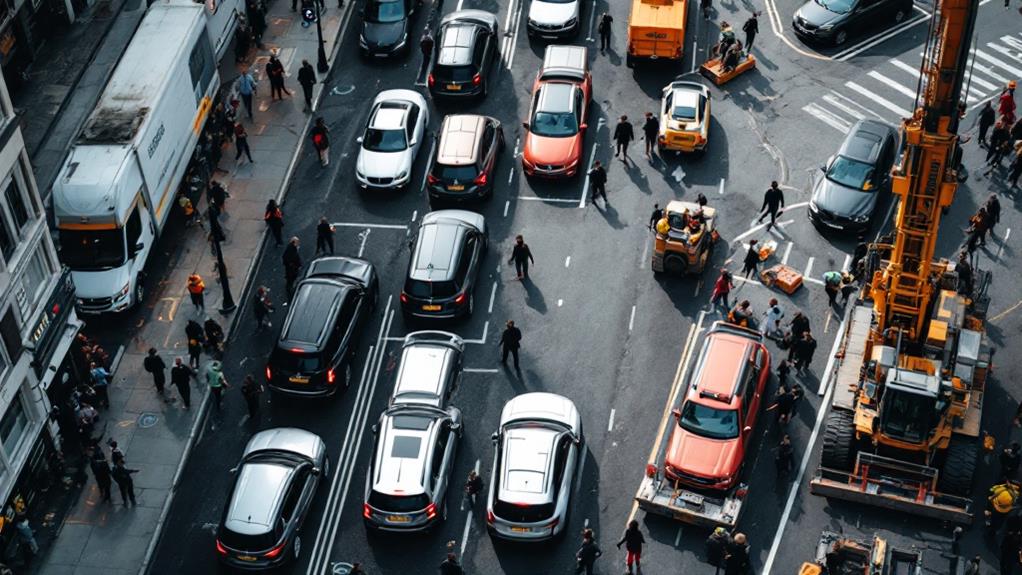
The reality of adapting London's infrastructure to accommodate larger vehicles presents a formidable challenge. As cars are getting bigger and wider, you'll find it increasingly difficult to park in standard spaces. With 161 car models now longer than a typical parking bay, you're likely to encounter issues when trying to fit your vehicle into tight spots.
The struggle isn't just about length; wider cars are causing problems too. You might find yourself unable to comfortably open your doors in narrow bays, as is the case with 27 car models. This issue is particularly pronounced with larger vehicles like the Land Rover Discovery.
To address these challenges, local authorities face significant obstacles:
- Rebuilding multi-storey car parks is often prohibitively expensive
- Introducing broader bays isn't feasible in all areas
- Adapting existing infrastructure requires substantial investments
- Balancing the needs of bigger vehicles with efficient use of limited space is complex
While some areas are introducing wider parking bays, it's not a universal solution. As you traverse London's streets in your larger vehicle, you'll need to be mindful of these infrastructure limitations and plan accordingly. The city's adaptation to accommodate bigger vehicles will likely be a gradual process, requiring patience and understanding from drivers.
Future of Urban Parking Design
Reimagining urban parking design is indispensable for accommodating larger vehicles in London's future. As proposals to increase the minimum car parking space size are being considered, experts believe this will only be a temporary fix. You'll need to think beyond simply enlarging spaces, as rebuilding multi-story car parks to fit oversized models is often too costly.
Instead, focus on incorporating parking flexibility and adaptability in new construction. By integrating parking requirements into urban planning and development, you can create more long-term solutions. Collaboration between urban planners and transportation authorities will be paramount in addressing this challenge.
To tackle the issue of larger cars, you might need to implement regulatory measures and incentives for car manufacturers to limit vehicle sizes. Additionally, exploring alternative mobility options could help reduce reliance on private cars. Consider promoting the use of smaller, more space-efficient vehicles and improving public transportation.
